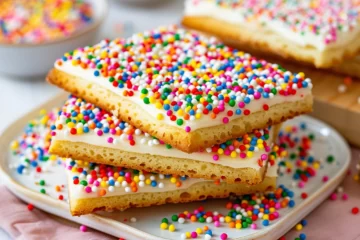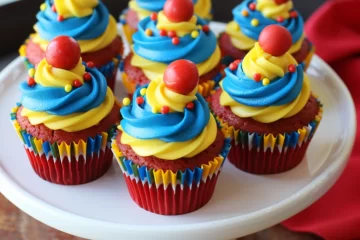Table of Contents
Guide to Making Money from a Food Blog Part Four: Analyzing Your Blog’s Performance
Understanding how your food blog is performing is crucial for growth and improvement. Regularly analyzing your blog’s metrics lets you see what’s working, what isn’t, and where you can optimize to enhance your readers’ experience. Here’s how you can effectively track and analyze your blog’s performance:
1. Set Clear Goals: Before you dive into analytics, define what success looks like for your blog. Are you aiming for more visitors, increased engagement, higher ad revenue, or more email subscribers? Setting specific, measurable goals will guide your analysis and help you focus on what matters most.
2. Use Analytics Tools: Tools like Google Analytics provide a wealth of information about your blog’s traffic and audience behavior. You can see how many people visit your blog, where they come from, how long they stay, and what content they engage with most. This data is invaluable for understanding your audience and refining your content strategy.
3. Monitor Social Media Engagement: Use the analytics social media platforms provide to track your posts’ performance. Look at likes, shares, comments, and the growth of your followers. This can tell you what posts resonate with your audience and drive traffic to your blog.
4. Check Your SEO Performance: Tools like Google Search Console can help you understand how your blog performs in search results. You can see which queries bring users to your site, how your pages rank, and how often people click through to your blog from the search engine results page.
5. Track Email Newsletter Metrics: If you have an email newsletter, pay attention to open rates, click-through rates, and subscription growth. These metrics can help you gauge the effectiveness of your email content and how well it drives engagement with your blog.
6. Analyze User Feedback: Direct feedback from your readers—through comments, emails, or surveys—can provide insights that aren’t always captured by analytics tools. Please pay attention to what your readers say about your content and their suggestions for improvement.
7. Regularly Review Your Goals and Metrics: Set a regular schedule to review your analytics and assess your progress. This could be monthly, quarterly, or whatever fits best with your blogging schedule. Use this time to adjust your strategies, try new approaches, and set new goals as needed.
8. Experiment and Learn: Based on the data you gather, don’t be afraid to experiment with your content, design, or marketing strategies. Sometimes, small changes can lead to significant improvements. Keep learning from your analytics and be flexible in your approach.

Regularly analyzing your blog’s performance lets you know what your audience enjoys and how best to serve them. This ongoing process helps you grow your blog and ensures it remains a relevant and engaging space for your community. With these insights, you’re well-equipped to keep your content fresh and exciting, constantly adapting to your readers’ tastes and preferences. Now, let’s explore how to keep your blog dynamic and continually engaging for your audience!
Keeping Your Content Fresh and Exciting
To keep your readers coming back, it’s essential to maintain a vibrant and continually evolving blog. Fresh content not only retains the interest of your current audience but also attracts new visitors. Here are some strategies to keep your food blog dynamic and engaging:
1. Stay Updated with Food Trends: Stay on top of the latest food trends. Whether it’s the newest diet craze, a popular cooking technique, or an emerging cuisine, incorporating these trends into your blog can attract readers looking for the latest information.
2. Seasonal and Thematic Content: Plan your content around seasons and holidays. Offer recipes that cater to specific times of the year, like summer barbecues, Thanksgiving dinners, or festive holiday treats. Seasonal relevance can increase the likelihood of your content being shared and enjoyed at the right time.
3. Regularly Introduce New Features: Keep your blog lively by regularly introducing new features. This could be a monthly ingredient spotlight, weekly cooking tips, or guest posts from other food enthusiasts. New features keep your content varied and give readers a reason to keep checking back.
4. Revisit and Update Old Posts: Over time, your older content can become outdated. Make a habit of revisiting old posts to update them with new information, improved photos, or even new insights. This keeps your content current and can boost SEO for those posts.
5. Engage with Other Food Communities: Expand your reach and bring fresh perspectives to your blog by engaging with other food communities. Participate in food forums, comment on other blogs, or collaborate with food vloggers. This can introduce your blog to new audiences and bring in new ideas.
6. Incorporate Multimedia Elements: Besides traditional blog posts, add other media formats like videos, podcasts, or photo essays. A cooking demo video or a podcast interview with a chef can provide a richer, more engaging experience for your readers.
7. Ask for Reader Input: Involve your audience by asking them what content they would like to see. You could use polls on social media, comments on your blog, or feedback via your newsletter. This ensures that your content is appealing and makes your readers feel like they are part of the creative process.
8. Challenge Yourself and Your Readers: Introduce cooking challenges, ingredient challenges, or themed recipe weeks. Challenges can be fun to engage your audience, create shareable content, and build a sense of community around your blog.
9. Stay Authentic: While keeping content fresh is essential, ensure it always aligns with your unique voice and brand. Your authenticity makes your blog special, so keep your personal touch evident even when exploring new ideas or formats.
10. Take Creative Breaks: Sometimes, the best way to refresh your content is to take a step back. Periodic breaks can help rejuvenate your creativity and prevent burnout. Use these times to gather new ideas and come back with renewed energy.

Implementing these strategies can keep your food blog exciting and relevant, ensuring it thrives and grows. Now, let’s wrap up with a look at a food blogger’s continuous journey.
Conclusion: The Continuous Journey of a Food Blogger
Embarking on the journey of a food blogger is an enriching experience that extends far beyond the kitchen. It’s a path filled with creativity, learning, and community. As we wrap up this guide, let’s reflect on the continuous journey of a food blogger and how you can keep evolving and enjoying this delicious adventure.
1. Always Be Learning: The world of food and blogging is ever-changing. New cooking techniques, evolving digital marketing strategies, changing SEO practices, and emerging food trends mean there’s always something new to learn. Embrace this ongoing education as part of your journey.
2. Adapt and Innovate: As your blogging journey grows, be open to adapting your approach based on feedback and analytics. Innovation can help you stay relevant and engaging. Whether it’s experimenting with new content formats or exploring new culinary styles, flexibility can lead to exciting discoveries.
3. Build and Nourish Relationships: Relationships with your readers, fellow bloggers, and brands can significantly enrich your blogging experience. These relationships can provide support, inspiration, and new opportunities. Attend food blogging conferences, participate in online communities, and collaborate to expand your network.
4. Maintain Your Passion: Your passion for food and blogging likely prompted you to start your blog. Keep that passion alive by continually engaging with what you love about food, whether crafting recipes, photographing dishes, or writing about culinary experiences. When your enthusiasm shines through, it attracts and inspires your audience.
5. Reflect and Refine: Regularly reflect on your journey. What are your most proud moments? What lessons have you learned? What would you like to improve? Reflection can provide valuable insights that help you refine your approach and set meaningful goals.
6. Celebrate Your Successes: No matter the size, celebrating your successes is essential. Whether you hit a new follower milestone, master a challenging recipe, or receive a heartfelt comment from a reader, these moments are the rewards of your hard work. Acknowledge and celebrate them.
7. Give Back to the Community: As you grow, consider how to give back to the community that supports you. This could be mentoring new food bloggers, supporting local food producers, or participating in charitable events. Giving back is a rewarding way to build deeper connections and make a positive impact.
8. Keep It Fun: Lastly, keep the fun in food blogging. Try new projects, take creative risks, and laugh at the mishaps along the way. Keeping a light-hearted and fun approach can make your blogging journey enjoyable for you and your audience.

The journey of a food blogger is as much about personal growth as it is about sharing and creating. It’s a continually evolving journey, bringing new tastes, challenges, and joys daily. Keep exploring, keep creating, and most importantly, keep eating!
Kitchen Gear and Equipment We Use and Love
I just wanted to let you know that some of the links on this page are affiliate links. This means that if you click on these links and make a purchase, I may earn a small commission at no extra cost to you. Rest assured, I only recommend products and services that I personally use and love. Your support through these links helps me continue to create valuable content and keep this blog running. I appreciate your support!
















